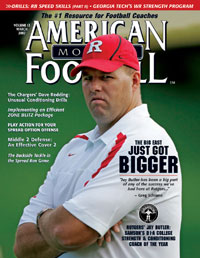AMERICAN FOOTBALL MONTHLY THE #1 RESOURCE FOR FOOTBALL COACHES
Article CategoriesAFM Magazine
|
Deadly Opponent-MRSA: An Invisible KillerYour team\'s most feared opponent might not be on the fieldby: AFM Editorial Staff © More from this issue On December 7, 2003, Coach Frank Girardi’s Lycoming Warriors lost 13-9 to Bridgewater (VA) in the quarterfinal round of the NCAA Division III playoffs. A disappointment to the legendary coach, to be sure. But the pain was nothing compared to the tragedy the team suffered less than 24 hours prior with the death of their star wide receiver, Ricky Lannetti. The 3rd team All-American had led Lycoming throughout his senior season, setting team records for most catches in a game (16) and a season (70). But, in less than one week, his life was claimed by MRSA – a deadly bacterial infection that is increasingly threatening athletic programs, especially football, across America. “Ricky was a very talented wide receiver, who holds many of our receiving records, and was very instrumental in the success of our program,” said Girardi....The full article can only be seen by subscribers. Subscribe today!
|
|
|||||||
| HOME |
MAGAZINE |
SUBSCRIBE | ONLINE COLUMNISTS | COACHING VIDEOS |
Copyright 2025, AmericanFootballMonthly.com
All Rights Reserved





